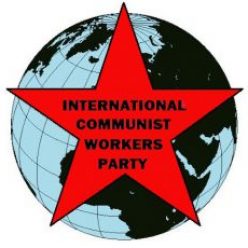The State and Revolution (Part I)
September, 1917: The Bolsheviks (communists) had led masses to crush the fascist Kornilov’s attempted coup. Soon they would win majorities in the Petrograd and Moscow Soviets. Lenin realized that the Bolsheviks had to figure out how to organize workers’ power. He hastily started re-reading Marx and Engels and writing The State and Revolution.
The main ideas of Marx, Engels and Lenin are still crucial today. They include:
- The state is “a product of society at a certain stage of development” when “it has split into irreconcilable antagonisms which it is powerless to dispel.” It exists as a tool for one class to suppress another while “seemingly standing above society.”
- The state, “a special coercive force,” was unknown in pre-class society. It consists of a special armed force along with “prisons, and institutions of coercion of all kind.”
- Every revolution confronts the relationship between ‘special’ bodies of armed men and the “self-acting armed organization of the population.”
- All previous revolutions perfected the state machine. The working-class (proletariat) must smash it. The working-class (socialist) revolution must “abolish” the capitalist state, not take it over.
After the socialist revolution, the “proletarian state or semi-state” (or the “remnants of the proletarian state”) would eventually “wither away.”
- In a democratic republic, “wealth exercises its power indirectly, but all the more surely.” Such is “the best possible political shell for capitalism.” Lenin noted that Engels explicitly called out universal suffrage as “an instrument of bourgeois rule.”
- Both Engels and Lenin thought that the “political form of the ‘state’” after the revolution would be “the most complete democracy.” It was therefore democracy that would “die down of itself” or “wither away.”
Marx, Engels and Lenin all fought against socialists who tried to twist their words into a justification of pacifism or political reform instead of revolution. We must wage the same ideological struggle today.
In the US, for example, some think that the problem is Trump when it’s really the whole capitalist state. The Bernie Sanders “our revolution” movement claims it will “transform politics” without smashing that state.
The Proletariat Organized as the Ruling Class
The harder part, for Lenin, was trying to figure out what things should look like after the proletarian revolution.
The Communist Manifesto had announced in 1848 that “the first step in the revolution by the working class is to raise the proletariat to the position of the ruling class to win the battle of democracy.
“The proletariat will use its political supremacy to wrest, by degree, all capital from the bourgeoisie, to centralize all instruments of production in the hands of the state, i.e., of the proletariat organized as the ruling class…”
Marx and Engels had thought that workers in countries like England might be able to win power through elections. Lenin, writing in the period of imperialism, disagreed. Workers everywhere would need a revolution to establish “an organization of violence …to suppress the resistance of the exploiters.” Both Marx and Lenin called this the “dictatorship of the proletariat.”
Lenin, like Marx, said that “this dictatorship itself only constitutes the transition to the abolition of all classes and to a classless society.” We agree with this. But Lenin said this would be necessary “for the entire historical period which separates capitalism from ‘classless society,’ from communism.”
We now see this “historical period” as being much, much shorter than Lenin and Marx imagined. They thought that the victorious working class would have to keep many central aspects of capitalist society (including the wage system) for the foreseeable future. They called this “socialism” or “the first stage of communism.”
“It follows,” Lenin admitted, “that under communism there remains for a time not only bourgeois law, but even the bourgeois state, without the bourgeoisie!” He didn’t foresee—but we can see now—that this bourgeois state turned the “proletariat organized as the ruling class” into a new bourgeoisie.
That’s why our strategy is to mobilize masses directly for a fully communist system of production and distribution, without money. When there is no wage system there will be no proletariat as such. And that’s why our view of the future workers’ state differs sharply from the Bolsheviks’ theory and practice.
We need many more comrades and Red Flag readers to help us develop our analysis.
Learn from the Bolshevik Revolution in Russia!
This fall marks the 100th anniversary of the 1917 communist-led revolution in Russia (October 25 Old Style/November 7 New Style). This was a monumental event in the history of our class and our movement. We have so much to learn from its successes, its shortcomings, and its fatal errors.
We call on all collectives of the International Communist Workers’ Party, and all Red Flag readers, to organize study groups, dinners, public forums, rallies and other events to promote the broadest and deepest possible understanding of the Bolshevik Revolution.
Let’s inspire masses to join and strengthen our communist work among workers, youth, and especially among soldiers and sailors! Let’s use this history to grasp more firmly the meaning and power of our slogan “Mobilize the Masses for Communism!”
SAVE THE DATE:
LOS ANGELES (US):
MINI-CONFERENCE AND DINNER
NOVEMBER 18, 2017 2:30-7:30 PM
SEATTLE (US) POT-LUCK AND MEETING:
Lessons for today and planning for the year ahead
NOVEMBER 4, 2017 7 PM


